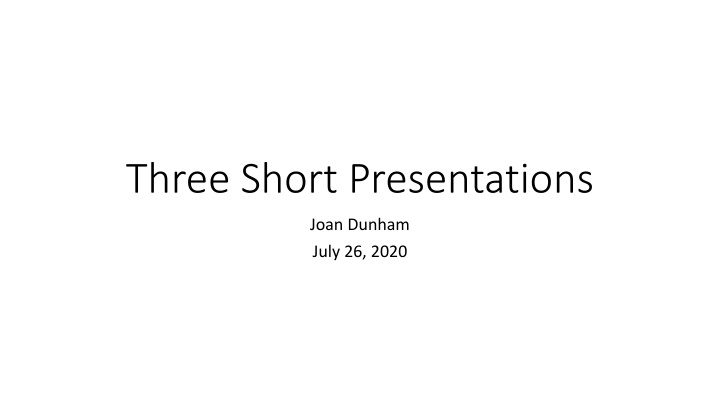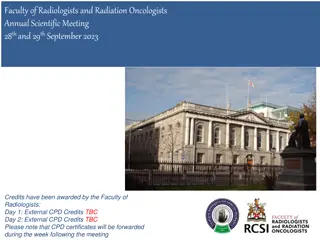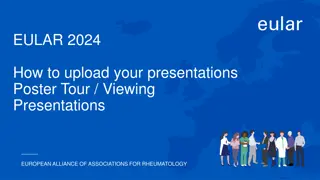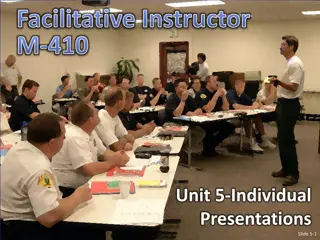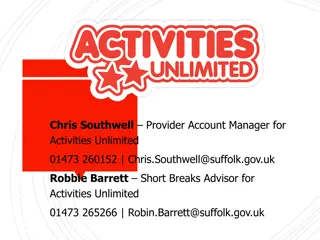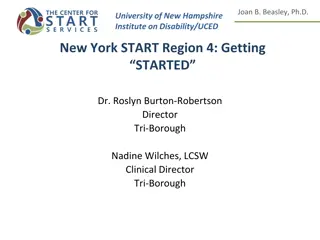Short Presentations by Joan Dunham - July 26, 2020
Within these presentations, Joan Dunham provides insights on sky watching and camera usage for observing celestial events. The process involves collimating the scope, attaching the camera and finder, aligning with the telescope, performing star alignment, finding the target, and recording the event. Detailed steps are outlined for preparation and operation, emphasizing careful handling and alignment. The use of various equipment and tools is crucial to ensure successful observation and data collection.
Uploaded on Mar 09, 2025 | 0 Views
Download Presentation

Please find below an Image/Link to download the presentation.
The content on the website is provided AS IS for your information and personal use only. It may not be sold, licensed, or shared on other websites without obtaining consent from the author.If you encounter any issues during the download, it is possible that the publisher has removed the file from their server.
You are allowed to download the files provided on this website for personal or commercial use, subject to the condition that they are used lawfully. All files are the property of their respective owners.
The content on the website is provided AS IS for your information and personal use only. It may not be sold, licensed, or shared on other websites without obtaining consent from the author.
E N D
Presentation Transcript
Three Short Presentations Joan Dunham July 26, 2020
SkyWatcher + QHY Camera Joan and David Dunham
Example of Preparation to Observe 16 SkyWatcher GOTO scope Collapsable Dobsonian Used as a transportable scope, not on a fixed mount Used and stored on a Scope Buggy QHY 174 GPS Camera Data capture with SharpCap RunCam Mighty-Mini Finder Display to portable video screen or Win10 tablet with IOTA Video Capture TalentCell 12V/6000mAh batteries 2 - one to power the scope, the other for the cameras Dell Laptop running SharpCap for data collection 3
Steps in Preparation to Observe Collimate the scope Attach the camera and finder and adjust the finder, if needed, to align with the telescope Perform star alignment of the telescope Find the target Record the event 4
Collimate Collimate first, before powering the telescope Collimate this scope every time Collimate carefully, it is possible to pop the primary completely out if the screws are run close to their limits 5
Video Finder RunCam NightEagle 2 Astro Edition Mighty-Mini Finder-scope version Cylinder built with a 3-D Printer by J. Moore Alignment to scope Check with bright object Moon or Jupiter Mark the center of the scope FOV on the finder video display with painter s tape If scope FOV not on the finder check the finder for attachment or other problems 6
Camera and Finder Attached Note the number of cables and cords 2 power cords, video cable, USB cable, GPS antenna cord 7
Observing Table Freestanding Holds Video display + battery Finder charts Laptop running SharpCap + mouse Flashlight Must be moved with the scope when it slews Avoid stress on the camera cables Requires 2 people, one to operate the scope, the other to carry the table 8
Align the Scope 2-star alignment preferable for asteroidal occultations Check alignment by commanding scope to another, nearby, target Use PAE (position accuracy enhancement) if it is close but not close enough Things that can go wrong Mis-identification of an alignment star; some stars have other bright ones nearby Coordinates or date/time entry error on set-up 9
Find the Target Tools to use Scope s catalog if it has the target star Finder charts + add the target star position as a user object Google Sky to augment the finder charts Problems Target area doesn t match finder charts Camera is red sensitive, red stars are brighter/blue stars fainter than catalog visual mag Asteroid in FOV can look like an unexpected star More stars in the FOV than on the finder charts Google Sky will show them On target area, don t see target, and event time is close Increase exposure and/or gain Take the data anyway postprocessing may find the target 10
